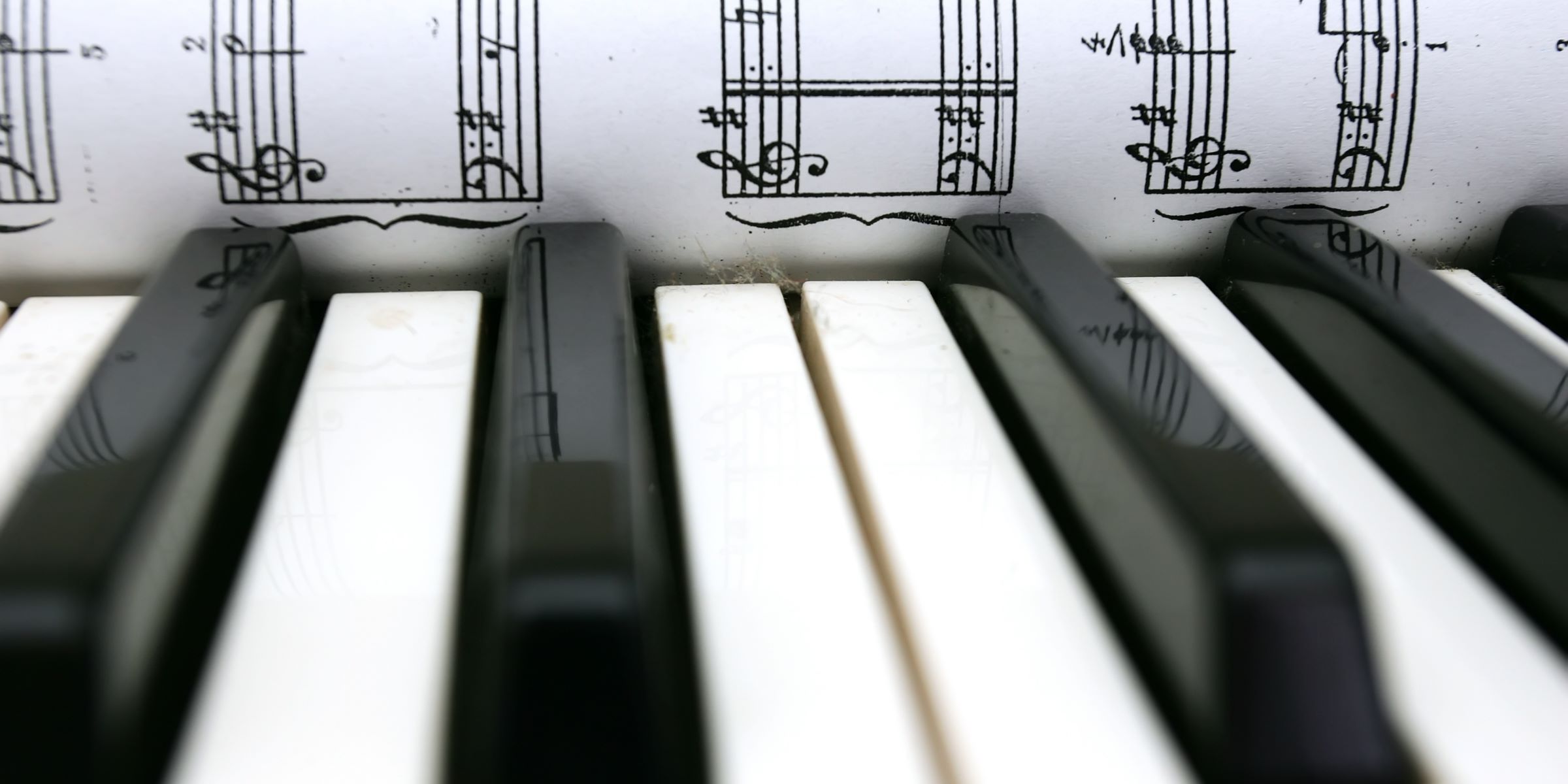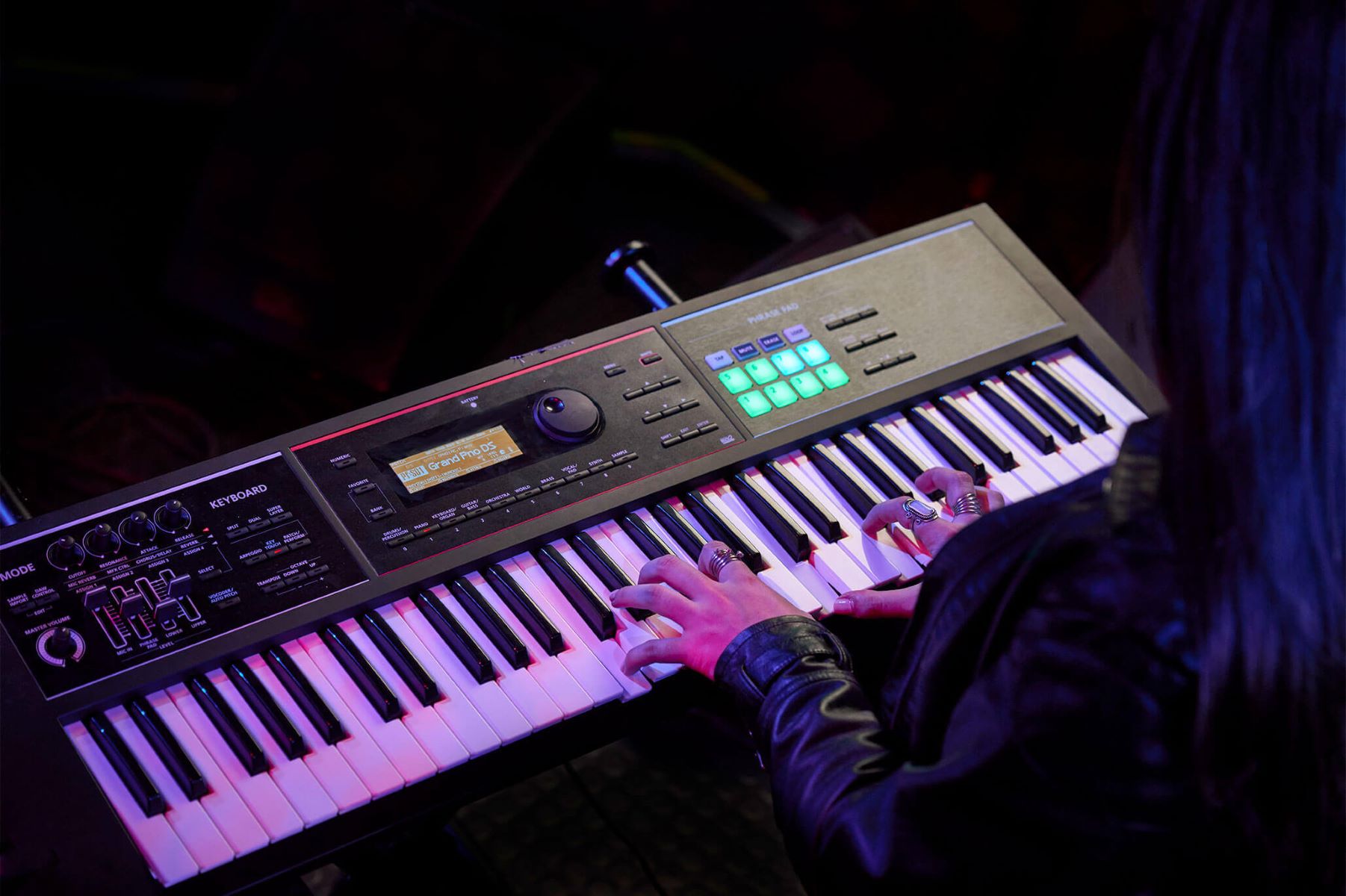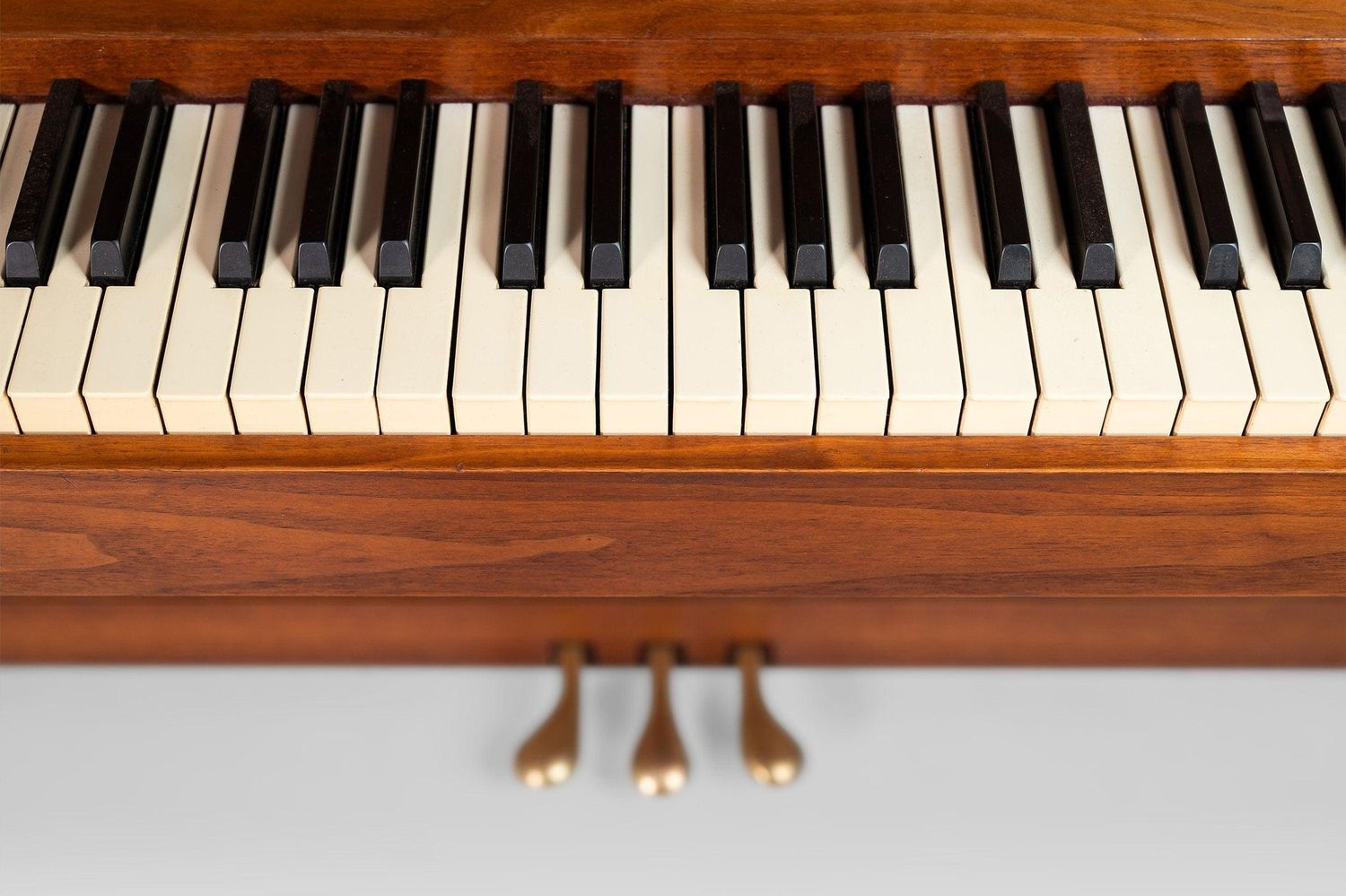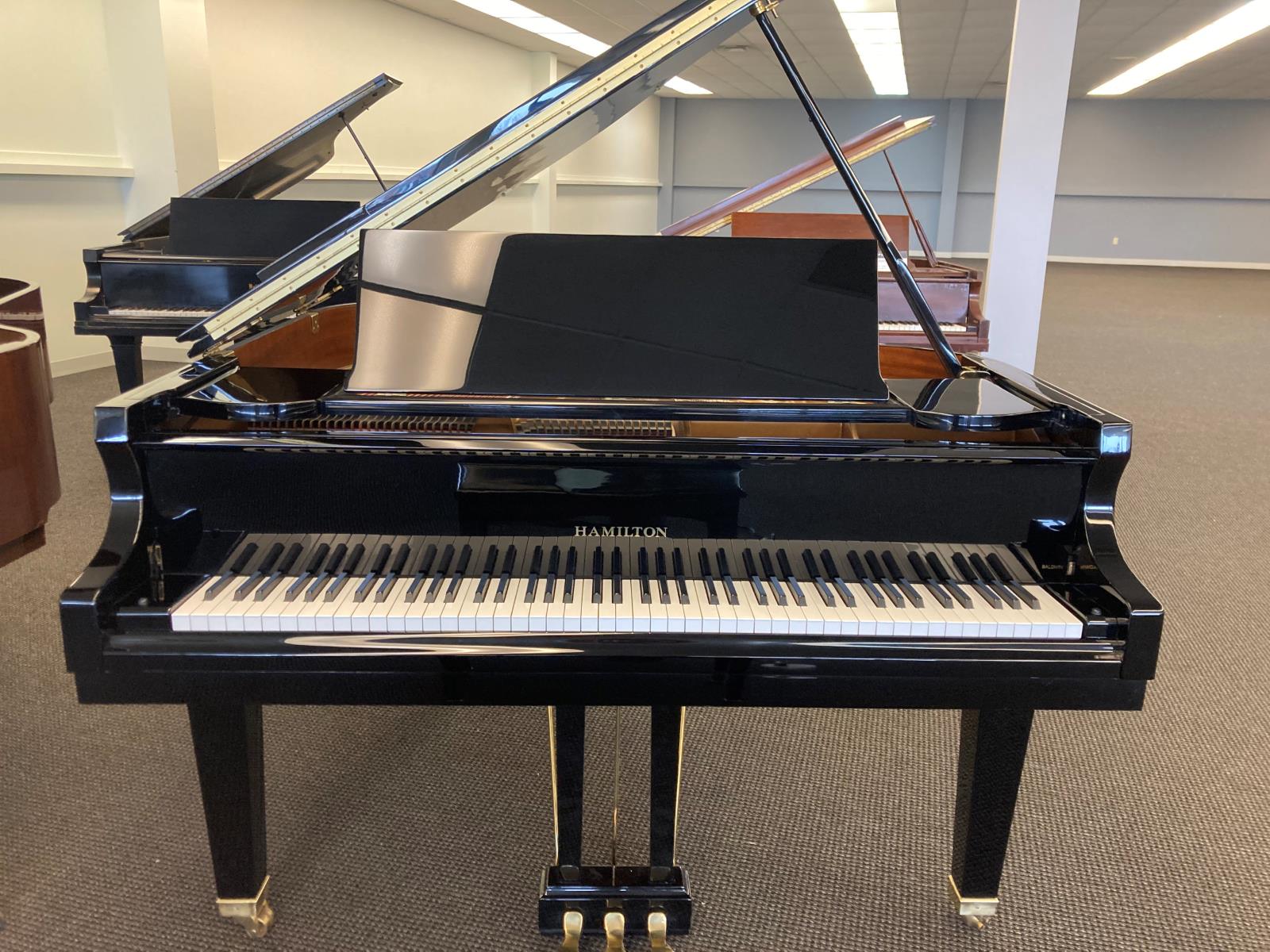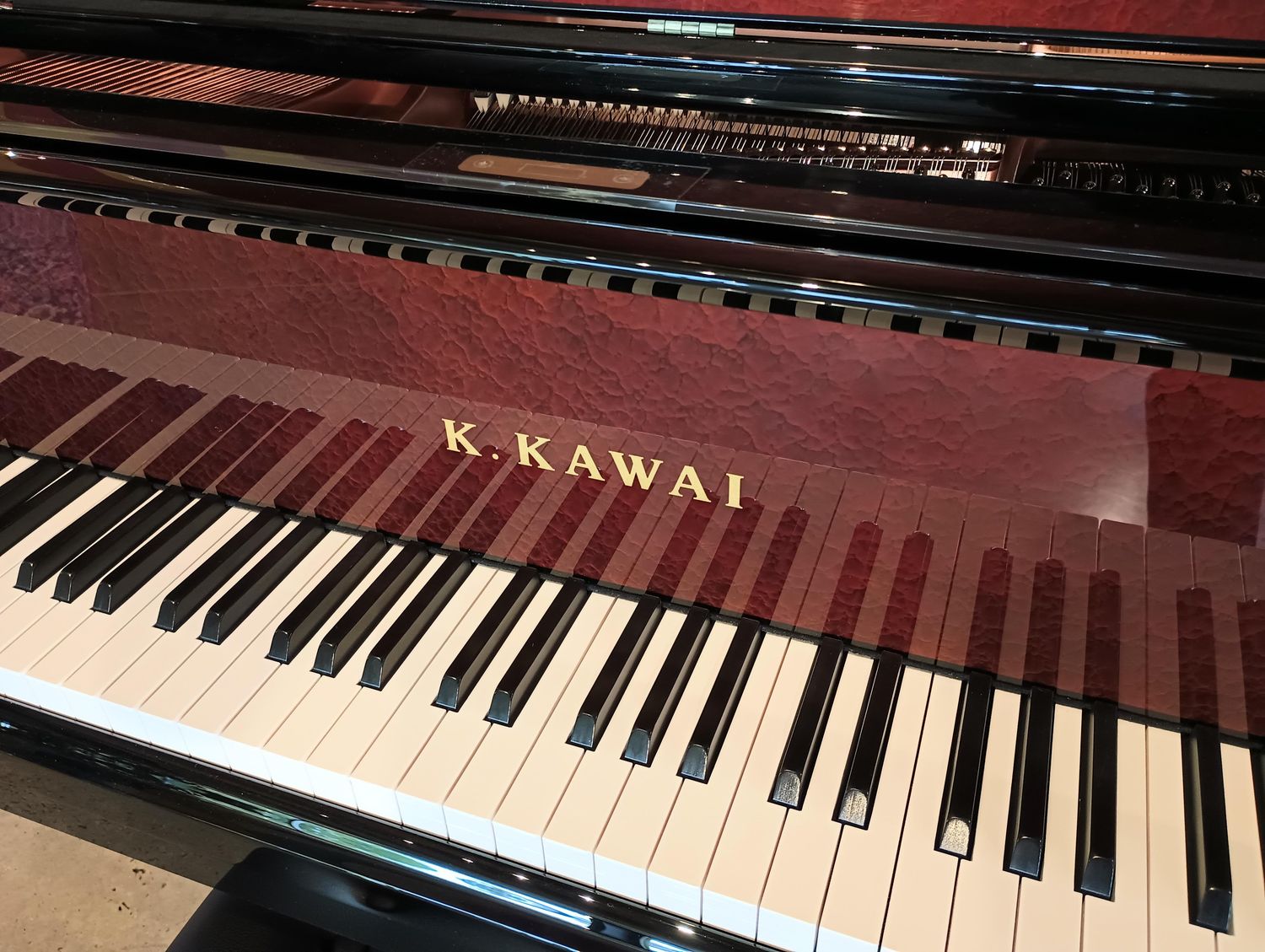Home>Instruments>Piano>How To Learn The Piano Keys


Piano
How To Learn The Piano Keys
Published: February 10, 2024
Learn the piano keys with our comprehensive guide. Master the piano and improve your skills with our expert tips and techniques. Start your musical journey today!
(Many of the links in this article redirect to a specific reviewed product. Your purchase of these products through affiliate links helps to generate commission for AudioLover.com, at no extra cost. Learn more)
Table of Contents
Introduction
Learning to play the piano is a rewarding and enriching journey that offers a gateway to the world of music. Whether you're a complete novice or have some musical background, mastering the piano keys is the foundation of your musical exploration. In this comprehensive guide, we'll delve into the intricacies of piano keys, from understanding the layout of the keyboard to practicing hand position and finger placement. By the end of this article, you'll gain a solid understanding of the piano keys and be well-equipped to embark on your musical odyssey.
The piano, with its 88 keys, is a versatile and expressive instrument that has been captivating musicians and audiences for centuries. Each key represents a specific musical note, and understanding how to navigate these keys is fundamental to playing the piano proficiently. Whether your goal is to play classical compositions, jazz standards, or contemporary hits, a firm grasp of the piano keys is essential.
Throughout this guide, we'll explore the layout of the piano, the distinction between white and black keys, and strategies to memorize the keys effectively. Additionally, we'll discuss the importance of proper hand position and finger placement, which are crucial elements in developing dexterity and precision at the piano. As we journey through these topics, you'll gain valuable insights that will empower you to approach the piano with confidence and enthusiasm.
Learning the piano keys is not merely a technical exercise; it's an immersive experience that fosters creativity, discipline, and emotional expression. Whether you aspire to play for personal enjoyment, entertain friends and family, or pursue a career in music, the knowledge and skills you'll acquire in this guide will serve as a solid foundation for your musical aspirations. So, let's embark on this musical expedition together and unravel the mysteries of the piano keys.
Understanding the Layout of the Piano
Before delving into the specifics of piano keys, it’s essential to grasp the layout of the instrument. The standard piano features 88 keys, comprising both white and black keys. These keys are organized in a repeating pattern of groups, with each group consisting of seven white keys and five black keys. The arrangement of the keys creates a visual and tactile roadmap that is integral to understanding and navigating the piano.
The white keys on the piano represent the natural notes of the musical alphabet: A, B, C, D, E, F, and G. These notes are the building blocks of melodies and harmonies, forming the core structure of music. In contrast, the black keys, known as sharps and flats, enhance the tonal range of the piano by representing the intermediate notes between the natural notes. Understanding the relationship between the white and black keys is fundamental to unlocking the full potential of the piano’s sonic palette.
As you familiarize yourself with the layout of the piano, you’ll notice that the black keys are grouped in sets of two and three, forming distinct patterns that repeat across the keyboard. This recurring pattern provides a visual reference point, enabling you to identify and locate specific keys with ease. Additionally, the layout of the keys facilitates the understanding of musical intervals, scales, and chord structures, laying the groundwork for musical proficiency and creativity.
Furthermore, the piano is divided into sections known as octaves, with each octave comprising eight consecutive keys, including both white and black keys. This division allows for the replication of the same notes at varying pitches, offering a wide range of sonic possibilities. Understanding the concept of octaves is pivotal in comprehending the arrangement of notes and developing a comprehensive understanding of music theory.
By familiarizing yourself with the layout of the piano, you’ll gain a solid foundation for navigating the instrument with confidence and precision. The visual and tactile organization of the keys serves as a fundamental guide as you embark on your musical journey, providing a framework for learning, practicing, and ultimately mastering the piano.
Learning the White Keys
As you embark on your piano journey, understanding the significance of the white keys is paramount. The white keys, also known as natural keys, represent the fundamental notes of the musical alphabet: A, B, C, D, E, F, and G. Each white key serves as a pivotal building block in the creation of melodies, harmonies, and musical compositions.
One of the first steps in learning the white keys is familiarizing yourself with their sequential arrangement on the keyboard. Starting from any note, the sequence of white keys follows a consistent pattern, ascending alphabetically from A to G before repeating. This repetition forms the basis of the piano’s layout, providing a structured framework for identifying and playing the white keys.
When you press a white key, you produce a specific musical note corresponding to its alphabetical designation. For example, pressing the key labeled “C” produces the note C, while pressing the key labeled “F” produces the note F. This direct correspondence between the visual labeling and the produced sound facilitates the process of associating notes with their respective keys, enabling you to navigate the keyboard confidently.
Learning the white keys involves developing fluency in recognizing their spatial arrangement and understanding their musical significance. As you acquaint yourself with the white keys, consider practicing simple exercises and melodies that exclusively utilize these keys. This hands-on approach allows for tactile reinforcement of the spatial layout and fosters a deeper connection between visual, auditory, and kinesthetic learning modalities.
Furthermore, understanding the concept of whole steps and half steps between white keys is crucial in grasping the fundamentals of musical intervals and scales. A whole step encompasses two consecutive keys, whether they are both white keys or a combination of a white key and a black key. In contrast, a half step represents the distance of one key, regardless of its color. This understanding forms the basis of constructing scales and chords, laying the groundwork for musical proficiency.
By immersing yourself in the exploration of the white keys, you’ll develop a solid foundation for navigating the piano keyboard and understanding the core elements of music theory. Embrace the tactile and auditory experience of playing the white keys, and let your musical journey unfold with each note you encounter.
Identifying the Black Keys
Amidst the array of piano keys, the black keys play a vital role in expanding the tonal range and harmonic possibilities of the instrument. These keys, known as sharps and flats, enrich the musical landscape by representing intermediate notes that augment the natural notes found on the white keys. Understanding and identifying the black keys is essential for unlocking the full melodic and harmonic potential of the piano.
Visually, the black keys are arranged in groups of two and three, forming distinct patterns that repeat across the keyboard. This visual arrangement provides a tactile reference point, allowing pianists to locate and distinguish the black keys with ease. The grouping of the black keys also serves as a visual indicator of the recurring pattern, aiding in the recognition and navigation of the keyboard.
Each black key is associated with two distinct note names, serving as enharmonic equivalents. For example, the black key located to the right of the note C can be identified as either C# (C sharp) or Db (D flat), depending on its context within a musical passage. This duality of nomenclature reflects the versatility and flexibility of the black keys in adapting to various musical scales and key signatures.
One of the fundamental roles of the black keys is to represent the concept of sharps (#) and flats (b) in music notation. A sharp raises the pitch of a note by a half step, while a flat lowers the pitch by a half step. The black keys effectively embody these alterations, allowing for the seamless integration of chromatic nuances within musical compositions.
Understanding the spatial relationship between the black keys and their adjacent white keys is pivotal in developing proficiency at the piano. The black keys are strategically positioned between certain pairs of white keys, creating a visual and tactile framework for identifying and playing them. By recognizing the patterns formed by the black keys, pianists can navigate the keyboard with precision and confidence.
As you familiarize yourself with the black keys, consider practicing exercises and melodies that incorporate their unique positioning and tonal characteristics. Embrace the expressive potential of the black keys, and explore the rich textures and colors they contribute to musical arrangements. By integrating the black keys into your musical repertoire, you’ll expand your creative palette and embark on a harmonically diverse musical journey.
Memorizing the Piano Keys
Memorizing the piano keys is a crucial step in developing fluency and confidence at the keyboard. Whether you’re a beginner or seeking to reinforce your knowledge, committing the layout of the keys to memory is essential for navigating the instrument with ease and precision. By employing mnemonic devices, visualization techniques, and consistent practice, you can effectively internalize the arrangement of the keys and enhance your musical proficiency.
One effective approach to memorizing the piano keys is through the use of mnemonic devices that aid in recalling the sequence and names of the keys. Mnemonics, such as acronyms or memorable phrases, can provide a playful and engaging way to imprint the keyboard layout in your mind. For example, creating a phrase using the first letter of each note, such as “All Cows Eat Grass” for the sequence of natural notes (A, C, E, G), can serve as a mnemonic aid in remembering the key arrangement.
Visualization techniques also play a pivotal role in memorization, as they enable you to mentally map the spatial layout of the keys. By visualizing the keyboard and mentally tracing the sequence of notes, you can reinforce your memory of the key arrangement. Additionally, associating specific landmarks on the keyboard with note sequences can create visual anchors that facilitate recall and recognition.
Consistent and deliberate practice is fundamental in solidifying your memorization of the piano keys. Engage in regular exercises that involve identifying and playing the keys, gradually expanding your repertoire as you become more proficient. Repetition and exposure to the keyboard layout will reinforce your memory and foster a deeper understanding of the spatial relationships between notes.
Another effective strategy for memorization is to integrate the use of sight-reading exercises and music notation. As you engage with musical scores and sight-reading materials, you’ll naturally reinforce your knowledge of the key arrangement while honing your musical interpretation skills. This multi-faceted approach not only enhances memorization but also cultivates a holistic understanding of musical notation and keyboard navigation.
Furthermore, creating a conducive learning environment, free from distractions and conducive to focused practice, can significantly aid in the memorization process. Establishing a consistent practice routine and immersing yourself in a musical atmosphere can enhance your ability to internalize the piano keys and their respective notes.
By employing mnemonic devices, visualization techniques, consistent practice, and immersive musical experiences, you can effectively memorize the piano keys and fortify your foundation in piano playing. Embrace the journey of memorization as an opportunity to deepen your connection with the instrument and unlock your musical potential.
Practicing Hand Position and Finger Placement
Developing proper hand position and finger placement is essential for mastering the piano and achieving fluidity, control, and expressiveness in your playing. The coordination and alignment of your hands and fingers directly impact your ability to navigate the keys with precision and grace. By focusing on ergonomic principles, mindful practice, and targeted exercises, you can cultivate a strong foundation in hand position and finger placement, empowering you to unleash the full potential of the piano.
Begin by establishing a relaxed and natural hand position that allows for agility and flexibility. Position your hands at a comfortable height above the keys, with your wrists level and relaxed. Avoid tensing your fingers or gripping the keys too tightly, as this can impede fluid movement and cause unnecessary strain. Cultivating a relaxed hand position sets the stage for effortless and graceful playing, enabling you to navigate the keyboard with ease.
Conscious awareness of finger placement is integral to executing precise and articulate melodies and chords. Each finger is assigned to specific keys, and understanding the allocation of fingers to notes is crucial for developing dexterity and control. The concept of finger numbering, where the thumb is designated as “1” and the fingers are numbered sequentially to the little finger as “5,” forms the basis of finger placement and facilitates coordinated movement across the keys.
Engage in targeted exercises that focus on finger independence, strength, and agility. Scales, arpeggios, and finger exercises designed to isolate and strengthen individual fingers are invaluable in honing your finger placement and developing nimble, responsive digits. These exercises not only enhance technical proficiency but also promote a deeper understanding of finger coordination and hand independence.
As you practice hand position and finger placement, pay attention to the alignment of your fingers with the keys. Aim for a consistent and even touch, allowing the weight of your arms to contribute to the sound production. Cultivating a balanced and nuanced touch on the keys is essential for achieving dynamic control and expressive phrasing in your playing.
Additionally, integrating repertoire that encompasses a variety of musical styles and technical demands can further enhance your proficiency in hand position and finger placement. Exploring diverse musical genres and compositions exposes you to a range of fingerings and hand positions, broadening your technical prowess and musical adaptability.
Embrace the journey of refining your hand position and finger placement as an opportunity for self-discovery and artistic growth. By prioritizing ergonomic principles, mindful practice, targeted exercises, and diverse repertoire, you’ll cultivate a strong foundation in hand technique, paving the way for a fulfilling and expressive musical journey at the piano.
Conclusion
Congratulations on embarking on the enriching journey of understanding and mastering the piano keys. As you’ve discovered, the piano keyboard is a captivating tapestry of notes, intervals, and possibilities, offering a gateway to the boundless world of music. By delving into the layout of the piano, learning the white and black keys, and honing your memorization skills, you’ve laid a solid foundation for your musical odyssey.
Understanding the layout of the piano, with its 88 keys organized into repeating patterns of white and black keys, provides a visual and tactile roadmap for navigating the instrument. The distinction between the natural notes represented by the white keys and the enharmonic equivalents embodied by the black keys underscores the rich tapestry of musical expression that the piano offers.
Memorizing the piano keys is not merely an exercise in rote learning; it’s an immersive experience that fosters a deeper connection with the instrument. By employing mnemonic devices, visualization techniques, and consistent practice, you’ve internalized the spatial arrangement of the keys, empowering yourself to navigate the keyboard with confidence and proficiency.
Practicing hand position and finger placement is a pivotal step in harnessing the expressive potential of the piano. By cultivating a relaxed hand position, mindful finger placement, and targeted exercises, you’ve honed your technical proficiency and laid the groundwork for fluid, nuanced playing.
As you continue your musical journey, remember that the piano keys are not merely static elements; they are conduits for creativity, emotion, and personal expression. Embrace the tactile and auditory experience of playing the piano keys, and allow your musical aspirations to flourish with each note you encounter.
Whether you aspire to play classical masterpieces, jazz standards, contemporary hits, or your own compositions, the knowledge and skills you’ve acquired in this guide will serve as a steadfast companion on your musical voyage. With dedication, curiosity, and a spirit of exploration, you’ll unlock the full potential of the piano keys and embark on a harmonious and fulfilling musical odyssey.






